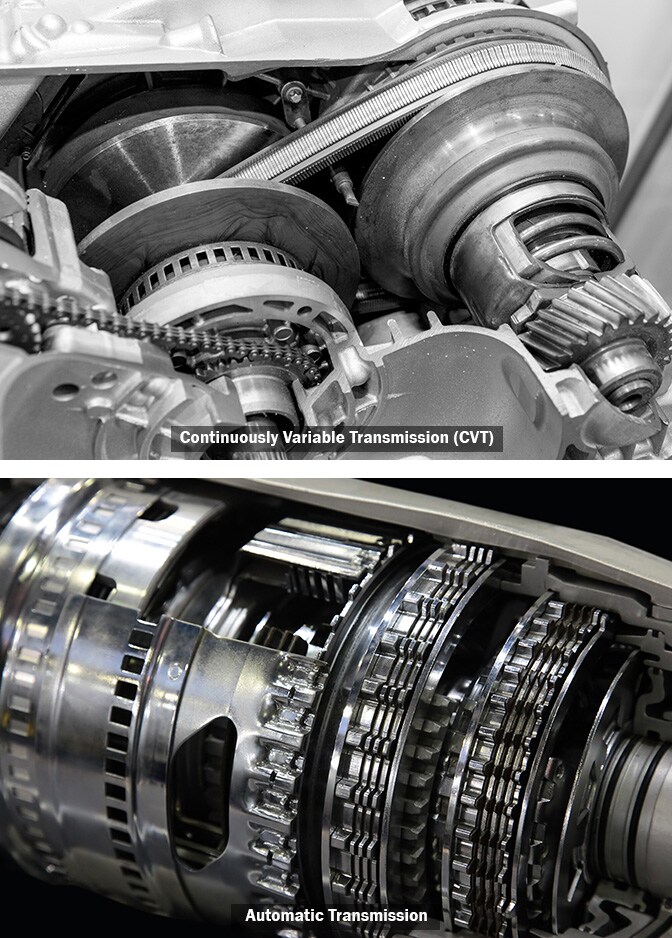So, that leads us to the inner workings of a CVT. Meaning of the initialism aside, a CVT, to put it simply, uses a belt drive to transmit the engine's power through the drivetrain and to the wheels. That's where the "continuously variable" part of the abbreviation comes into play. In essence, you have two pulleys, each with continuously variable diameters (can constantly be changed) connected by a belt or a chain. A shaft connects one pulley (drive pulley) to the engine's power output, and the other pulley (driven pulley) sends the power through another shaft and to the drivetrain.
As those pulley diameters vary, so does the speed and torque ratio for the power transmitted. Think about it like the gears on a bicycle. If your pedals connect to a large gear and send the power to a smaller gear, one rotation of the pedals can equal several wheel rotations - perfect for low-speed acceleration. Going from a small to large gear does the opposite. In essence, this is the concept behind both an automatic and CVT transmission. We'll get into the differences between them in a bit.
With a CVT transmission, those variable pulleys act like the gears of a bicycle, and the belt acts like the chain connecting them. When you get moving from a stop, the pulley diameters optimize accordingly to favor torque for acceleration. At high speeds, the ratio changes to select efficient and smooth horsepower delivery, in turn letting you cruise along efficiently and smoothly. That's the gist of it, but to understand it at a deeper level, let's look at how a CVT compares to an automatic transmission.



